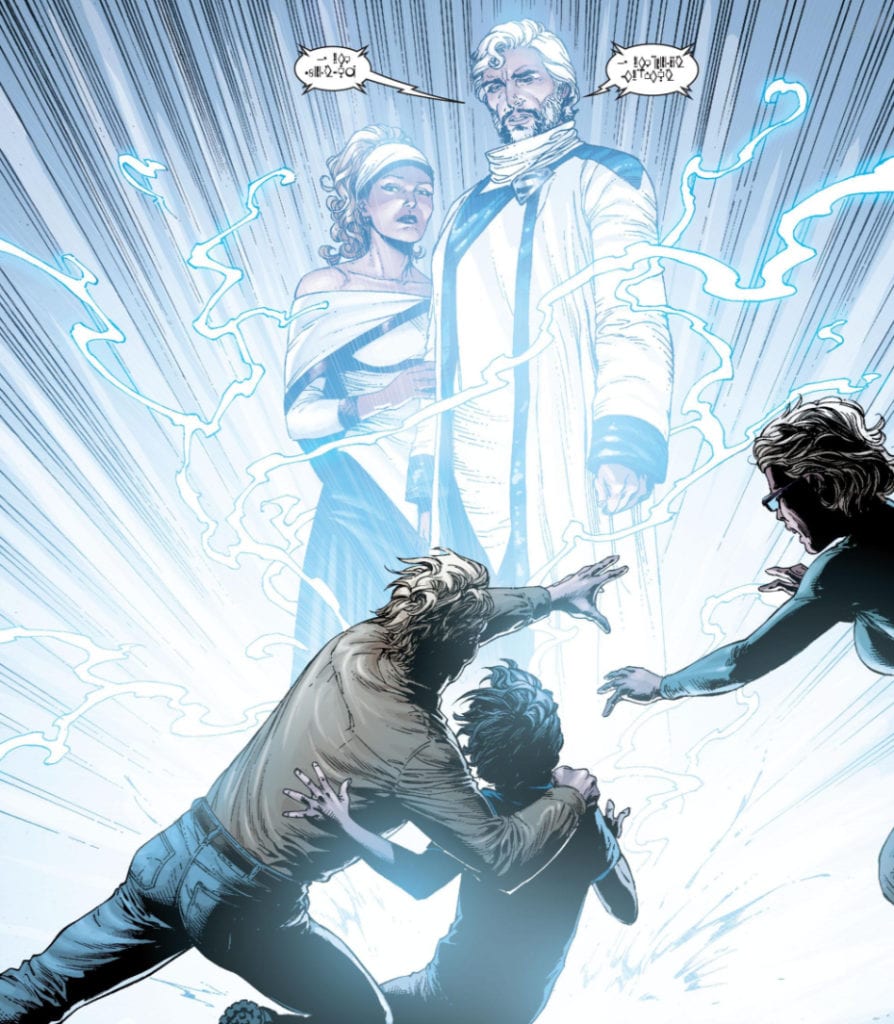In 1978 the world was made to believe a man could fly.
Richard Donner brought the iconic American superhero, Superman, to the big screen and created a new movie genre that has since taken over the summer blockbuster. However, the translation from Comic Book to Cinema screen wasn’t a straightforward process and was just one element of an ongoing transmedia project.

From Page to Screen
Superman wasn’t the first superhero to appear on the big screen. In fact, several superheroes, Superman among them, had already appeared in cinemas throughout the early half of the 20th century. Superheroes were popular in print, and Hollywood was quick to snap up the properties and entice children with film serials that were shown every week on the big screen. Some characters proved to be popular, and it turned out that the superhero story fitted perfectly into the serial format.
Donner’s version of Superman was the first big-budget outing for any superhero, and translating the character’s serial, and often inconsistent, history to the big screen was to prove one of the most important aspects of its success. The film did such a good job telling the story that the film’s version of Superman’s origin is still seen as the defining one. Donner took aspects of the comic books and reimaged the character to sell to a new audience. It could be argued that the film was not aimed at the readers of the comic but at this new cinema audience, and Donner’s treatment of the character reflects this. The defining characteristics of Superman, and alter ego Clark Kent, were extracted and these formed the basis for the new origin story. In constructing the film’s plot, Donner and writer Mario Puzo reduced the character to the bare essentials. The visual reduction necessary in the art of comic book production became a narrative necessity for the movie, so it to appeal to a large audience.

Revisiting the Origins, Again.
Years later, Geoff Johns would be faced with retelling Superman’s origin story after the events of DC’s line-wide Infinite Crisis storyline. When reading Superman Secret Origin #1, illustrated by Gary Frank, you are instantly reminded of the 1978 movie. Although Kal-El’s initial transition from Krypton to Earth is absent, a number of the set pieces in the comic mirror the early scenes in the movie. A scene involving the throwing of an American Football; the introduction of Ma and Pa Kent; a sequence with a thrasher; all have duplicate sequences in Donner’s movie, but they have been altered to fit Johns’ new, updated narrative. He invokes the movie’s nostalgia, giving the fans what they want, but he also subverts the narrative to situate the characters in the ‘new world’ after the DC Crisis storyline.
The 1978 movie took the noblest aspects of the character from over four decades of comics and condensed them into a single story to highlight the attributes that mattered. In Johns’ reworking of Superman’s origin in 2009, he reverses this reduction, fleshing out the character. Using recognizable scenes, he can enhance aspects of the character that the readers are already familiar with. It’s a case of ‘re-show and tell.’
The changes that each writer makes are reflective of the time periods in which they worked. The movie is seen as a reflection of innocence, a simple breakdown of an all American hero. Donner’s Superman is the ultimate boy scout trying to fit in and do the right thing. He listens to his adoptive father’s advice, even though this makes him an outsider to his immediate peer group. He learns restraint and control and grows up to be charming and the epitome of ‘goodness.’ The teenage Clark is the type of child that American society wanted, the opposite of the juvenile delinquents that were supposedly created by reading comics in the 1950s.
Johns’ story comes after a long history of ‘darkness’ enveloping the superhero genre. Characters like Spider-Man made teenage angst popular in the comics. Towards the late 1980s, Alan Moore and Frank Miller thrust superheroes into the darkest depths, giving the genre an uncomfortable autopsy. The landscape had changed, and Johns acknowledges this with his take on the Superman origin. He takes the character-building moments from Donner’s movie and twists them to create a different tone and a much more angst-ridden Clark Kent. This Clark is more in line with modern sensibilities and the experiences of modern teenagers. Years of darkness within comic book plots, and teenage coming of age movies, have altered the narrative playing field, and Johns used remnants of the past to make the story relevant to a modern audience. He attempts to pacify the long time readers while attracting a new audience.

Conclusion
Over the years, from his first appearance in comic strips, through radio and television, and back into the latest iteration of the character in DC’s monthly floppies, the mythology of Superman has grown beyond the boundaries of his own stories. Superman has become a part of popular culture, reaching audiences who have never read a superhero comic. Each retelling reinforces aspects of the myth but also introduces new elements. Like any legend, there is no longer any ‘true’ Superman origin, merely an accumulation of ideas and concepts drawn from multiple sources. Each new writer/artist/director picks and chooses the elements that best suit the story they tell in the medium they are telling it. It is impossible to pick one comic or one film that is the starting point of the legend: Superman lives through them all, a transmedia character in a multi-narrative universe.

